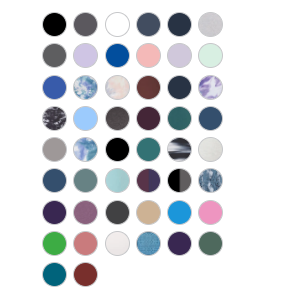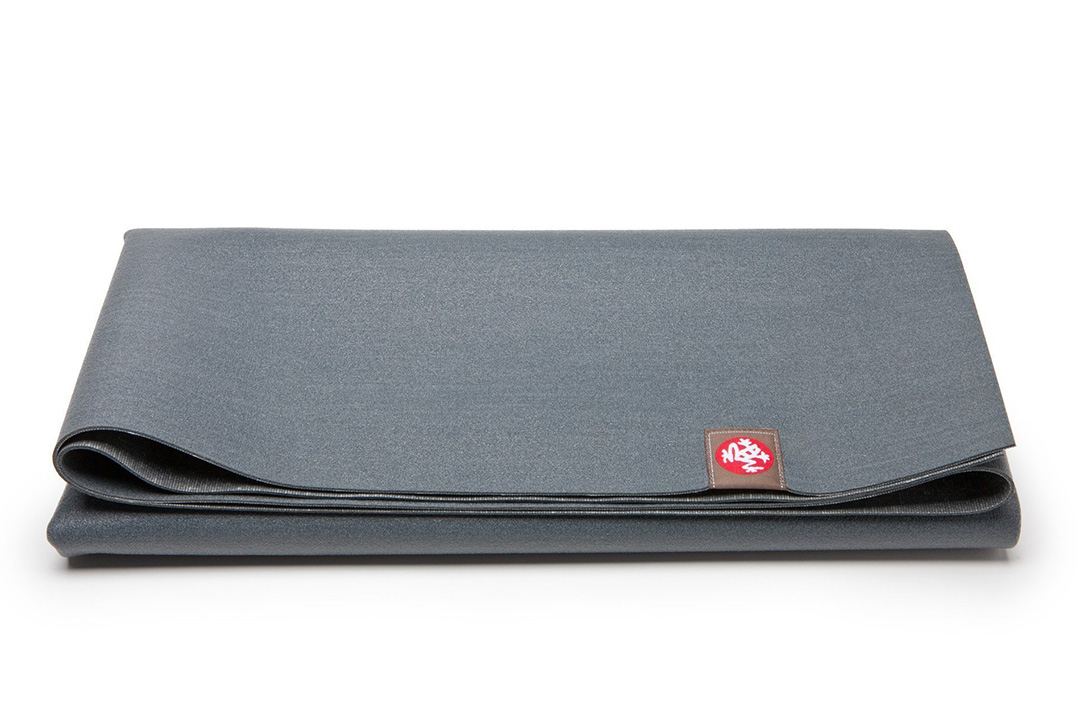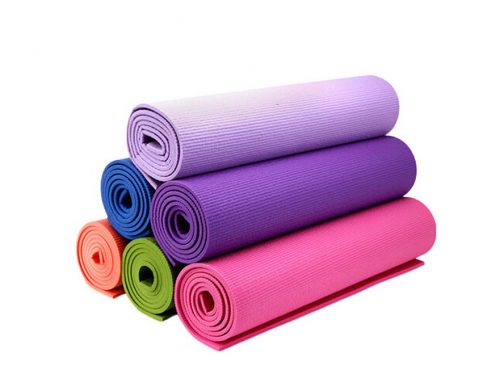Table of Contents
1. Manduka Yoga Mat Sizes
1.1 PRO Travel Yoga Mat 2.5mm
- This PRO travel yoga mat of Manduka, recommended by yoga fans all over the world, holds a lifelong service
- The perfect cushioning offers yogis comfort, support and safety
- 2.5mm in thickness; 71 inches x 24 inches; 2.4 lbs
1.2 EQUA® EKO® Round Yoga Mat 3mm
- Freedom and Ease of poses in all directions
- Easy to carry and clean
- 3mm in thickness; 59 inches in diameter
1.3 GRP® Lite Yoga Mat 4mm
- Leather-like layer on the top ensures strong grip
- Excellent sweat- and smell-absorbing functionality due to the infused charcoal infused natural rubber
- 4mm in thickness; 71 inches x 26 inches; 3.7 lbs
1.4 Cross Train X Mat 5mm
- Ideal for a variety of training purposes
- Appealing grip and durability
- 5mm in thickness; 71 inches x 24 inches; 3.7 lbs
2. Manduka Yoga Mats Colors


3. How Are Manduka Yoga Mats Made?
Many of our customers want to know how Manduka yoga mats are made, but they have little time to visit our company’s production line of Manduka yoga mats in person. So we wrote this article to introduce in detail the manufacturing process Manduka of yoga mats to facilitate your comprehending.
The manufacturing process of Manduka yoga mats can be classified into two types in terms of the number of mats’ layers: the traditional one of single-layer yoga mats and the emerging one of multi-layer mats.
3.1 The Manufacturing Process of Single-layer Manduka Yoga Mats
- Compounding material: Selecting raw materials according to the formula and mixing them into latex mixture.
- Adjusting machines: The boiler preheating the machine, setting and adjusting parameters of each district, and installing related material and mesh cloth on the machine in place.
- Brushing: Tightening the mesh cloth to the needle track, flattening it and then brushing it.
- High temperature foaming: The brushed mesh cloth is drawn to the foaming molding chamber of high temperature through the needle plate.
- Cooling: After foaming, the product is drawn out of the chamber to dissipate heat, then cooled and shaped.
- Cutting corners: Adjusting the distance of the tool holder at the end of the machine to cut the product according to customers’ requirement.
- Slicing: Continuing to cut the product to the required thickness.
- Embossing / Texturing: Making anti-slip stripes.
- Sizing: Cutting products to the size required by the customer.
- Graphic printing: Adopting laser marking or UV printing to print the pattern onto yoga mats.
- Logo marking: Adopting laser marking or screen printing to print customers’ logo onto yoga mats.
- Quality inspection: 100% inspecting each yoga mat, reworking or scrapping the defective ones, and any single defective mat bought by customers is unacceptable.
- Packing: Packing qualified products and putting them in storage.
3.2 The Manufacturing Process of Multi-layer Manduka Yoga Mats
This manufacturing process of multi-layer Manduka yoga mats with alignment lines/artwork feature advanced high technology which is especially adopted in the production of a kind of Manduka yoga mats that have anti-slip design, alignment lines and gorgeous patterns. In yoga exercises, there are many complicated and varied asanas that needed to be performed in place so as to achieve the due effect. On the contrary, if the asanas is wrong or the movement angle is not correct, the ideal effect can not be obtained and even worse, the physical injury may come out! The traditional Manduka yoga mats, though presenting functions such as anti-slipping and cushioning, are lack in other additional functions. And it is often the case that these yoga mats will yield to problems or dangers mentioned above. In view of these technical defects, Speck Group is dedicated to researching and devising high-tech processes, exerting every effort to make yoga mats both ideal and practical.
A multi-layer Manduka yoga mat has three-layer structure:
- On the first layer, the mat is printed with positive marks on its front, which are in the form of crosses. These laser-printed crosses, either paralleled or perpendicular, serve as marks of reference to tell yoga practicers the right position. Therefore, when yoga learners perform exercise, they can touch and sense these marks so as to correct and improve movements by themselves, further avoiding unnecessary injuries and enhancing immune systems.
- The middle layer is made of special cotton fibers, which can not only absorb and disperse water quickly but also shield bacteria.
- The ground layer is made of natural rubber and can thus greatly boost the grip performance of the mat. The surface of the mat, directly contacted with human body, uses high-tech anti-slip process, which can reduce the incidence of slipping and bring comfortable as well as soft feeling to the skin.
The Following Is The Detailed Manufacturing Process:
- Compounding material: Selecting raw materials according to the formula and mixing them into latex mixture.
- Adjusting machines: The boiler preheating the machine, setting and adjusting parameters of each district, and installing related material and mesh cloth on the machine in place.
- Brushing: Tightening the mesh cloth to the needle track, flattening it and then brushing it.
- High temperature foaming: The brushed mesh cloth is drawn to the foaming molding chamber of high temperature through the needle plate.
- Cooling: After foaming, the product is drawn out of the chamber to dissipate heat, then cooled and shaped.
- Cutting corners: Adjusting the distance of the tool holder at the end of the machine to cut the product according to customers’ requirement.
- Slicing: Continuing to cut the product to the required thickness.
- Hot pressing multiple layers: The multi-layer semi-finished products, stacked neatly in order, are laminated into a whole by a hot press.
- Embossing / Texturing: Making anti-slip stripes.
- Sizing: Cutting products to the size required by the customer.
- Graphic printing: Adopting laser marking or UV printing to print the pattern onto yoga mats.
- Logo marking: Adopting laser marking or screen printing to print customers’ logo onto yoga mats.
- Quality inspection: 100% inspecting each yoga mat, reworking or scrapping the defective ones, and any single defective mat bought by customers is unacceptable.
- Packing: Packing qualified products and putting them in storage.

4. How Can We Establish A Successful Yoga Mats Brand Like “Manduka”?
If you have been yearning for your own yoga mat brand like “Manduka” with existing mats of all types in the market, or if you want to have a reliable custom yoga mat manufacturer, you can contact us Speck, an experienced manufacturer of yoga and fitness products. Pursing great product quality consistently, we help brand owners and wholesalers to enhance their brand and profit from their own businesses!
Do You Want To Make Custom Design Yoga Mat?
Drop Us An Email And You Will Receive Our Feedback Within 24 Hours.
As a leading yoga mat manufacturer, Speck Group focuses on innovation, quality, simplicity, and sustainability.










